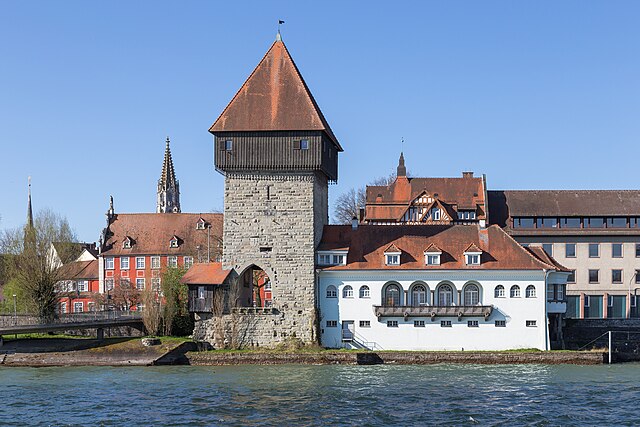Germany–Switzerland border
The border between the modern states of Germany and Switzerland extends to 362 kilometres (225 mi), mostly following Lake Constance and the High Rhine, with territories to the north mostly belonging to Germany and territories to the south mainly to Switzerland. Exceptions are the Swiss canton of Schaffhausen, the Rafzerfeld of the canton of Zürich, Bettingen and Riehen municipalities and part of the city of Basel in the canton of Basel-City and the old town of the German city of Konstanz, which is located south of the Seerhein. The canton of Schaffhausen is located almost entirely on the northern side of the High Rhine, with the exception of the southern part of the municipality of Stein am Rhein. The German municipality of Büsingen am Hochrhein is an enclave surrounded by Swiss territory.
Rötteln Castle, Hohentengen am Hochrhein (Germany) as seen across the Rhine from Kaiserstuhl (Switzerland)
Historic Rhine bridge between Diessenhofen (left) and Gailingen (right), completed in 1816
Customs facilities between Konstanz (Germany) and Kreuzlingen (Switzerland)
Waldshut–Koblenz railway bridge over the High Rhine between Germany (left) and Switzerland (right)
Konstanz, also known as Constance in English, is a university city with approximately 83,000 inhabitants located at the western end of Lake Constance in the south of Germany. The city houses the University of Konstanz and was the residence of the Roman Catholic Diocese of Konstanz for more than 1,200 years.
Rheintorturm, a section of the former city wall of Konstanz at Lake Constance
The Imperia statue at the Lake Constance harbour of Konstanz is the city's famous landmark
Schnetztor, a section of the former city wall.
Memorial to the murdered Jews of Konstanz








